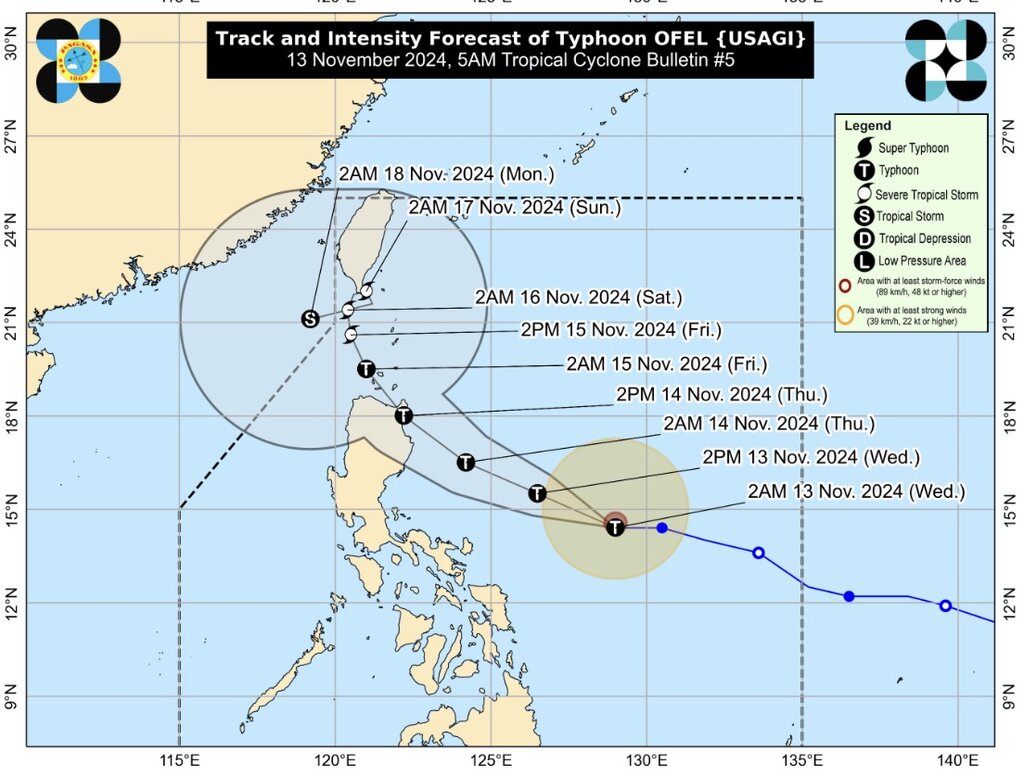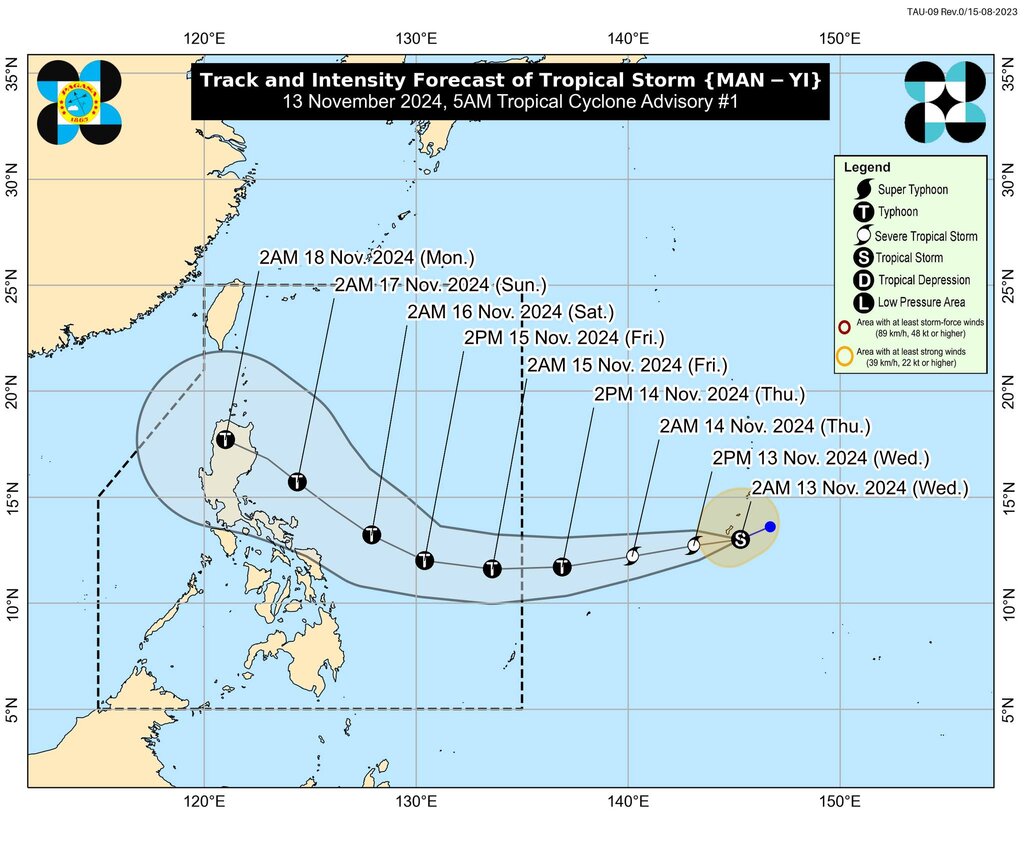The latest storm information from the Philippine weather agency PAGASA at 5:00 a.m. on November 13 said that Typhoon Usagi (local name: Ofel) has strengthened into a typhoon. The center of the storm is 475 km east-northeast of Virac, Catanduanes, Philippines. Typhoon Usagi is moving west at a speed of 25 km/h. Maximum sustained winds near the center of the storm are 120 km/h and gusts of up to 150 km/h.
Forecasters in the Philippines said that Usagi will move over the Philippine Sea before making landfall along the eastern coast of Cagayan or Isabela, Philippines on the afternoon of November 14. The storm will then cross the Luzon Strait on November 15, turning more north to northwest while slowing down. Usagi is forecast to be erratic this weekend.
PAGASA forecasts that the path of Typhoon Usagi is likely to change, especially on the 4th and 5th days of the forecast period. In particular, when approaching Taiwan (China), Typhoon Usagi is likely to turn north-northeast, moving in a circle towards the East Sea. The unexpected movement of the typhoon near the East Sea is expected to occur on November 16 and 17.
Typhoon Usagi is forecast to steadily strengthen over the next 24 hours and is likely to make landfall in the Philippines at its peak intensity.

The Philippines has issued a new weather warning as Typhoon Usagi is expected to become the fifth storm in three weeks to hit the country, just days after thousands were evacuated ahead of Typhoon Toraji.
The Philippine government evacuated more than 32,000 people from vulnerable areas in the northern Philippines ahead of Typhoon Toraji's landfall on November 11, weeks after Typhoon Trami, Typhoon Yinxing and Super Typhoon Kong-rey killed 159 people.
Following Usagi, the Philippine weather agency warned that Typhoon Man-yi, currently near the Northern Mariana Islands, could also threaten the Philippines next week.

About 20 major storms hit the island nation or its surrounding waters each year.
According to AFP, a recent study shows that storms in the Asia-Pacific region are increasingly forming closer to the coast, strengthening faster and lasting longer over land due to climate change.
Typhoon Usagi will continue to move northwest, approaching the waters south of Taiwan on November 13 and 14, but its path near the South China Sea remains uncertain, said Chu Mei-lin, a forecaster at the Taiwan Meteorological Administration. Usagi is likely to come closest to the island on November 15 and 16.
Typhoon Usagi, which formed on November 12, is one of four new typhoons this season active in the northwest Pacific basin. This is the first time that four tropical storms, Usagi, Toraji, Man-yi and Yinxing, have been active in the basin in November.











